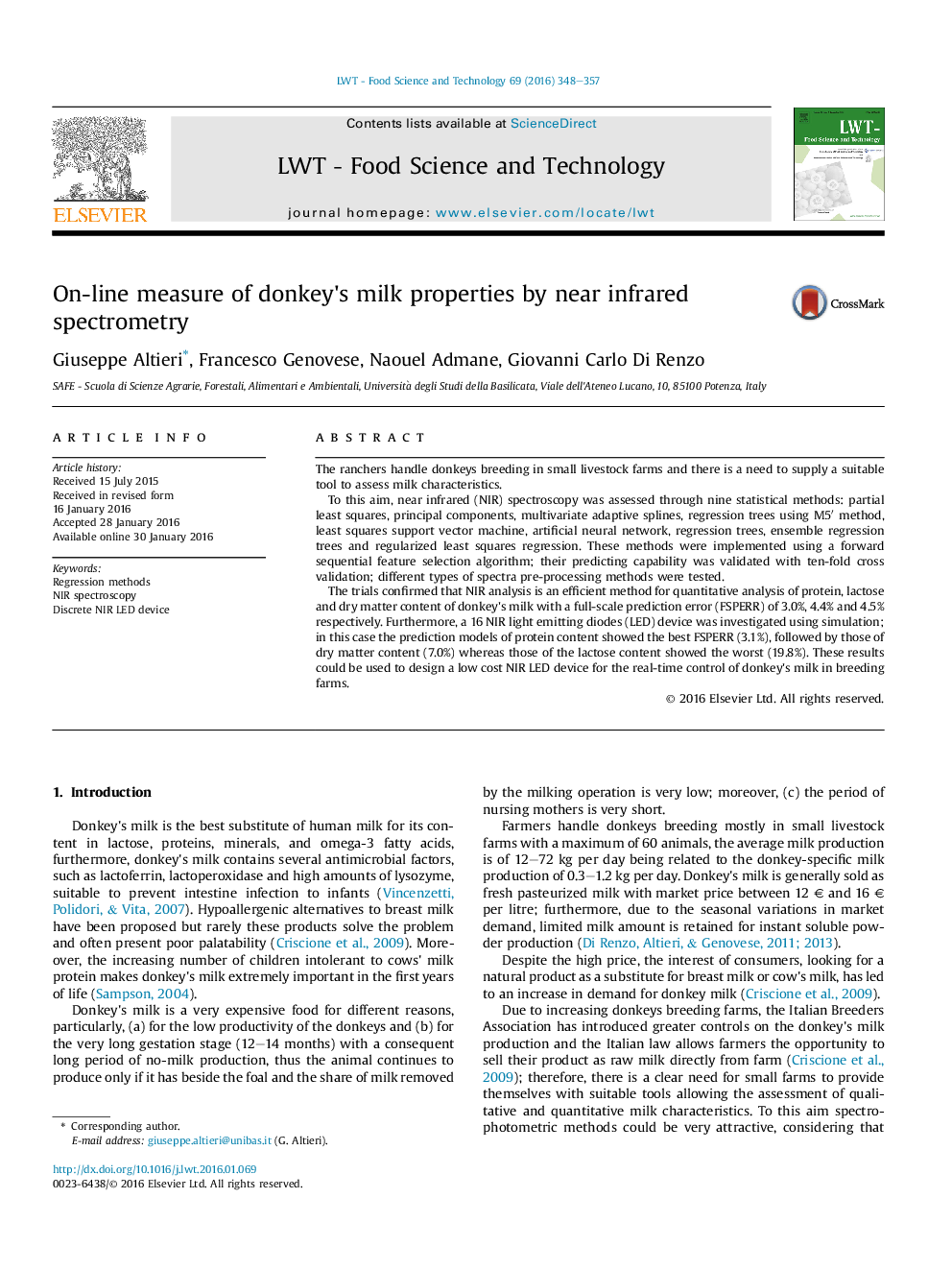| Article ID | Journal | Published Year | Pages | File Type |
|---|---|---|---|---|
| 4563756 | LWT - Food Science and Technology | 2016 | 10 Pages |
•Creation of good chemometric models is mandatory for a well performing NIR analysis.•NIR analysis is an adequate method for the quantitative analysis of donkey's milk.•Obtained results could be employed to design a low cost discrete 16 NIR LED device.
The ranchers handle donkeys breeding in small livestock farms and there is a need to supply a suitable tool to assess milk characteristics.To this aim, near infrared (NIR) spectroscopy was assessed through nine statistical methods: partial least squares, principal components, multivariate adaptive splines, regression trees using M5′ method, least squares support vector machine, artificial neural network, regression trees, ensemble regression trees and regularized least squares regression. These methods were implemented using a forward sequential feature selection algorithm; their predicting capability was validated with ten-fold cross validation; different types of spectra pre-processing methods were tested.The trials confirmed that NIR analysis is an efficient method for quantitative analysis of protein, lactose and dry matter content of donkey's milk with a full-scale prediction error (FSPERR) of 3.0%, 4.4% and 4.5% respectively. Furthermore, a 16 NIR light emitting diodes (LED) device was investigated using simulation; in this case the prediction models of protein content showed the best FSPERR (3.1%), followed by those of dry matter content (7.0%) whereas those of the lactose content showed the worst (19.8%). These results could be used to design a low cost NIR LED device for the real-time control of donkey's milk in breeding farms.
